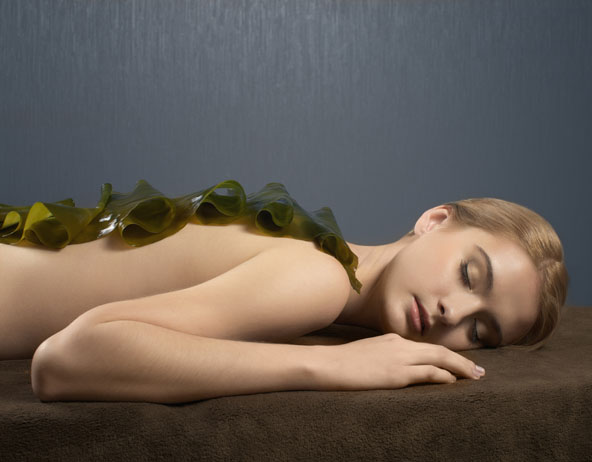
The use of seaweeds themselves in cosmetics, rather than extracts of them, is rather limited.
Milled seaweed, packed in sachets, is sold as an additive to bath water, sometimes with essential oils added. Bath salts with seaweed meal are also sold. Thalassotherapy has come into fashion in recent years, especially in France. Mineral-rich seawater is used in a range of therapies, including hydrotherapy, massage and a variety of marine mud and algae treatments. One of the treatment is to cover a person’s body with a paste of fine particles of seaweed, sometimes wraps them in cling wrap, and warm the body with infrared lamps. It is said to be useful in various ways, including relief of rheumatic pain or the removal of cellulite.
Paste mixtures are also used in massage creams, with promises to rapidly restore elasticity and suppleness to the skin. The seaweed pastes are made by freeze grinding or crushing. The seaweed is washed, cleaned and then frozen in slabs. The slabs are either pressed against a grinding wheel or crushed, sometimes with additional freezing with liquid nitrogen that makes the frozen material more brittle and easier to grind or crush. The result is a fine green paste of seaweed.
There appears to be no shortage of products with ingredients and claims linked to seaweeds: creams, face masks, shampoos, body gels, bath salts, and even a do-it-yourself body wrap kit. The efficacy of these products must be judged by the user. One company recently pointed out that the lifetime of cosmetic products has reduced over the years and now rarely exceeds three to four years. Perhaps the seaweed products that are really effective will live longer than this.
We have this available on https://seatechbioproducts.com/cosmetics-personal-care
A guide to the seaweed industry- FAO (Page 95-96)